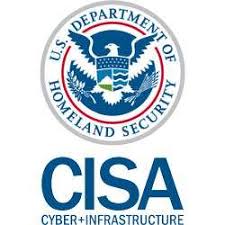 A new joint cybersecurity advisory from CISA, the FBI, and the NSA cautions organizations against Russian-based attacks and provides mitigations to be implemented.
A new joint cybersecurity advisory from CISA, the FBI, and the NSA cautions organizations against Russian-based attacks and provides mitigations to be implemented.
It’s one thing to see an advisory that simply says “hey, we’re seeing bunch more attacks.” But when you also see 8 pages of recommended security measures and a statement encouraging “the cybersecurity community—especially critical infrastructure network defenders—to adopt a heightened state of awareness and to conduct proactive threat hunting”, you know they know something you don’t.
This is exactly what is in yesterday’s cybersecurity advisory entitled “Understanding and Mitigating Russian State-Sponsored Cyber Threats to U.S. Critical Infrastructure”.
While the advisory isn’t focused on a specific threat, it does begin with some general statements of what’s been observed:
Historically, Russian state-sponsored advanced persistent threat (APT) actors have used common but effective tactics—including spearphishing, brute force, and exploiting known vulnerabilities against accounts and networks with weak security—to gain initial access to target networks.
Russian state-sponsored APT actors have also demonstrated sophisticated tradecraft and cyber capabilities by compromising third-party infrastructure, compromising third-party software, or developing and deploying custom malware. The actors have also demonstrated the ability to maintain persistent, undetected, long-term access in compromised environments—including cloud environments—by using legitimate credentials.
Even if you’re not a “critical infrastructure” organization, this advisory is solid reading. It offers real-world examples of Russia-based attacks, vulnerabilities used, observed tactics and techniques mapped to the MITRE ATT&CK Framework, and practical guidance to shore up your Detection, Incident Response, and Mitigation efforts.
In general, the advisory makes the following high-level recommendations:
- Be prepared – this includes minimizing security gaps and creating a detailed incident response plan
- Enhance your organization’s cyber posture – this includes implementing best practices across identity and access management, protective controls, as well as vulnerability and configuration management
- Increase organizational vigilance – this includes staying updated on threats and ensuring users are educated through continual Security Awareness Training
 New-school Security Awareness Training is critical to enabling you and your IT staff to connect with users and help them make the right security decisions all of the time. This isn't a one and done deal, continuous training and simulated phishing are both needed to mobilize users as your last line of defense. Request your one-on-one demo of KnowBe4's security awareness training and simulated phishing platform and see how easy it can be!
New-school Security Awareness Training is critical to enabling you and your IT staff to connect with users and help them make the right security decisions all of the time. This isn't a one and done deal, continuous training and simulated phishing are both needed to mobilize users as your last line of defense. Request your one-on-one demo of KnowBe4's security awareness training and simulated phishing platform and see how easy it can be!




